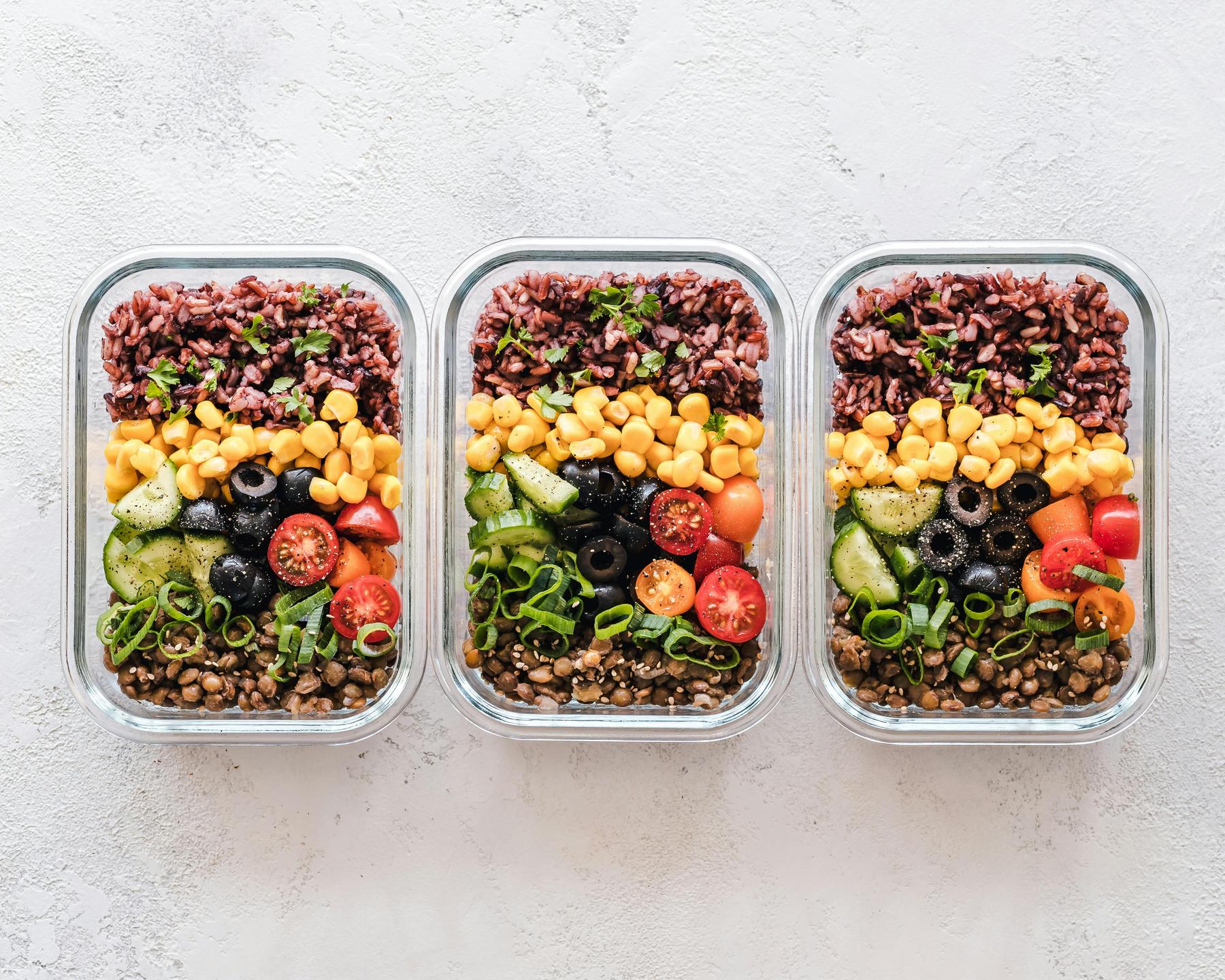In modern Australia, our relationship with food servings has undergone a dramatic transformation. What was once considered a standard meal portion would now appear modest, even insufficient to many diners. This phenomenon, known as “portion distortion,” represents a significant but often unrecognised factor in the rising prevalence of overweight and obesity across the nation. Since the 1980s, the average Australian adult now consumes approximately 30% more calories per meal, with food portions for common items such as bagels, muffins, and restaurant meals having doubled or even tripled in size. This normalisation of oversized portions has distorted our perception of appropriate serving sizes, contributing significantly to unintentional overconsumption and associated health challenges.
What Is Portion Distortion and How Has It Evolved?
Portion distortion refers to the gradual increase in what we perceive as a “normal” serving size and the corresponding disconnect between recommended nutritional portions and what we actually consume. This phenomenon has developed systematically over the past four decades, fundamentally changing our food environment and consumption habits.
Historical data reveals striking changes in standard food portions. For example, commercially produced bagels have expanded from approximately 7.5 cm in diameter in 1985 to 15.2 cm by 2020, effectively doubling the calorie content per unit. Similarly, restaurant pasta servings have undergone significant expansion, with spaghetti and meatball portions growing from 500 calories in the 1980s to over 1,025 calories in contemporary servings.
Beverage sizes represent perhaps the most dramatic example of portion inflation. Soda bottles have expanded from 192 mL to 591 mL, delivering 250 calories compared to the historical 85-calorie servings. This 300% increase in volume has occurred so gradually that many consumers no longer recognise the extent to which portion norms have shifted.
The Australian dietary landscape shows selective supersizing across food categories. While typical potato fry portions have reduced by approximately 40% since 1995 (likely in response to health messaging), energy content in pizza servings has increased by 66% during the same period. This pattern of portion growth is particularly pronounced in discretionary foods, which now constitute approximately 35% of the average Australian energy intake.
Why Are Our Portion Sizes Getting Larger?
The expansion of portion sizes reflects a complex interplay of commercial, psychological, and environmental factors rather than a simple response to increased energy requirements.
Commercial Drivers
Food manufacturers and restaurants employ “value engineering” strategies that increase package and serving sizes to enhance perceived affordability and consumer satisfaction. This approach creates a competitive market advantage, as consumers frequently equate portion size with value. When examining discretionary foods specifically, the energy content of a typical cake slice has surged by 950 kJ (approximately 66%) between 1995 and 2012, while processed meat servings increased by 570 kJ (39%) during the same period.
Environmental Influences
The food environment itself facilitates larger portions through physical changes in serveware and packaging. Domestic plate sizes have increased from an average diameter of 25 cm in the 1980s to 30 cm in the 2020s, creating a perceptual bias where standard nutritional portions appear inadequate on larger plates. Behavioural research confirms that switching from 30 cm to 25 cm plates reduces energy intake by approximately 22% without diminishing perceived satiety.
The urban food landscape further reinforces portion distortion through widespread availability of supersized options. Australian metropolitan areas host approximately 4.2 fast-food outlets per 10,000 residents, with typical combo meals providing 1,200–1,800 kcal—representing 60–90% of daily energy requirements for many adults.
How Does Portion Distortion Affect Our Health?
The health consequences of portion distortion extend beyond simple weight gain, affecting multiple physiological systems and contributing to chronic disease development.
Weight Management Challenges
Research demonstrates a clear dose-response relationship between portion sizes and energy intake. When presented with larger portions, individuals consume 20–25% more calories regardless of their hunger levels or BMI status. This systematic overconsumption translates directly to weight gain, with studies indicating that every additional 100 kcal consumed daily correlates with approximately 4.5 kg of weight gain annually.
The cumulative impact is evident in Australian health statistics, where 63.4% of adults exceed healthy weight thresholds, with obesity rates projected to reach 35% by 2030 if current trends continue. This trajectory is directly linked to the normalisation of larger portions and their impact on total energy intake.
Metabolic and Cardiovascular Effects
Chronic overconsumption associated with portion distortion impairs normal physiological regulation. Specifically, regular consumption of oversized portions can impair leptin signaling (the hormone that signals fullness), blunt insulin sensitivity, and promote visceral adiposity—key pathways in the development of metabolic syndrome.
Cardiovascular health is similarly affected through dual pathways: excessive energy intake and nutrient imbalances. For example, the documented increase in processed meat portion sizes since 1995 has elevated average daily sodium intake by approximately 4.6% per decade, frequently exceeding the recommended 1.5–2.3 g/day limit for adults. This dietary pattern has contributed to a hypertension prevalence of 34% among Australian adults.
Gastrointestinal health also suffers, as oversized meals delay gastric emptying and can contribute to gastroesophageal reflux disease (GERD), with incidence rates of 18–28% in Western populations.
What Role Does Psychology Play in Portion Perception?
Our relationship with portion sizes is heavily influenced by psychological factors that often override physiological signals of hunger and fullness.
Neurological Response to Portion Size
Neurogastroenterological research identifies portion distortion as partly stemming from conditioned responses to environmental food cues that bypass homeostatic hunger regulation. Functional MRI studies demonstrate that exposure to large portions activates dopaminergic pathways in the brain’s reward centres, priming consumption behaviours that may exceed physiological needs.
This neurological response helps explain why 72% of consumers report feeling obligated to finish served portions regardless of satiety—a phenomenon commonly referred to as “clean plate syndrome.” This social conditioning creates a disconnect between internal hunger cues and external portion norms.
Visual Perception and Satiety
The size and appearance of food presentations significantly impact perceived sufficiency and satisfaction. When identical portions are served on different-sized plates, those on smaller plates are consistently rated as more filling despite containing the same amount of food. This perceptual illusion contributes to unnecessary consumption when using larger dishware.
Food marketing exploits these psychological vulnerabilities through strategic packaging and presentation. Single-serve packages have gradually expanded while maintaining the “individual portion” designation, effectively recalibrating consumer expectations while increasing caloric delivery.
How Can We Combat Portion Distortion in Daily Life?
Evidence-based strategies can help individuals regain portion awareness and control, even within an environment that promotes oversized servings.
Practical Measurement Systems
The hand-proportion method provides a portable, equipment-free approach to portion control that can be implemented in any setting:
| Food Category | Hand Measurement | Approximate Equivalent |
|---|---|---|
| Protein | Palm-sized portion | 100-120g cooked lean meat |
| Carbohydrates | Cupped hand | 75g cooked rice/pasta |
| Vegetables | Two fist-sized portions | 300g raw leafy greens |
| Fats | Thumb tip | 5-7g butter/oil |
| Fruits | Closed fist | One medium piece or 150g |
Clinical studies demonstrate an average weight loss of 6.3 kg over 12 weeks when combining hand-based portioning techniques with appropriate healthcare support, making this approach both practical and effective.
Environmental Modifications
Strategic modifications to the eating environment can reduce unintentional overconsumption:
- Downsizing dishware: Using 25 cm plates rather than 30 cm plates can reduce energy intake by approximately 22% without affecting satisfaction.
- Pre-portioning high-energy foods: Dividing bulk packages into single servings immediately after purchase establishes appropriate portion boundaries.
- Implementing the half-plate rule: Filling half the plate with vegetables before adding other components naturally limits portions of higher-energy foods.
- Practicing mindful eating: Removing distractions during meals improves portion awareness and recognition of satiety signals.
What Role Can Healthcare Providers Play in Addressing Portion Distortion?
Healthcare systems are uniquely positioned to address portion distortion through structured interventions and technological innovations.
Telehealth Interventions
Digital health platforms have demonstrated particular efficacy in portion management through:
- AI-Powered Image Recognition: Mobile applications that estimate meal volumes via smartphone cameras achieve 89% accuracy relative to weighed measures, providing immediate portion feedback.
- Virtual Reality Training: Immersive simulations improve portion estimation skills by 37% compared to traditional educational materials.
- Remote Professional Support: Structured telehealth programs combining medical supervision with dietitian consultations achieve significant outcomes, with some programs documenting weight reductions of up to 20.2% through comprehensive approaches that include portion management.
Clinical Framework Integration
Embedding portion control education within standard clinical practice enhances outcomes across multiple health parameters. The Australian 5As framework (Ask, Assess, Advise, Assist, Arrange) provides a structured approach for healthcare providers, improving portion awareness in 68% of patients within six consultations when systematically implemented.
Recalibrating Our Portion Perspective
Addressing portion distortion requires a multifaceted approach that recognizes its biological, psychological, and environmental dimensions. While individual strategies like hand-based measurements and dishware modifications offer immediate tools for portion management, sustainable change necessitates broader environmental and system-level interventions.
The emerging integration of telehealth support with traditional healthcare delivery provides promising pathways for addressing portion distortion at scale. These approaches combine the accessibility of digital tools with the accountability and personalization of professional guidance—a combination that addresses both the practical and psychological aspects of portion control.
As we move forward, reestablishing appropriate portion norms will require coordinated efforts across food systems, healthcare delivery, and individual behaviours. By recognizing portion distortion as a significant but modifiable contributor to health outcomes, we can develop more effective approaches to healthy eating in contemporary food environments.
How much have average portion sizes increased over the past decades?
Since the 1980s, standard portion sizes for many common foods have increased by 200-300%. For example, commercially produced bagels have doubled in diameter from 7.5 cm to 15.2 cm, while beverage containers have expanded from 192 mL to 591 mL. These increases translate to significantly higher caloric intake, with the average Australian adult now consuming approximately 30% more calories per meal compared to four decades ago.
Can portion control alone lead to significant weight loss?
Research indicates that structured portion control interventions can produce clinically meaningful weight loss. Clinical trials combining hand-based portioning techniques with appropriate healthcare support demonstrate an average weight reduction of 6.3 kg over 12 weeks. While portion management represents just one component of comprehensive weight management, it addresses a fundamental contributor to energy imbalance and can significantly impact overall outcomes when consistently applied.
How do restaurant portions compare to nutritional recommendations?
Restaurant portions frequently exceed nutritional guidelines by substantial margins. Standard restaurant pasta servings now deliver approximately 1,025 calories—representing over half the daily energy requirements for many adults in a single dish. Similarly, typical fast-food combo meals provide 1,200–1,800 kcal, constituting 60–90% of daily energy needs. This discrepancy contributes significantly to unintentional overconsumption.
What simple tools can help with portion control at home?
Effective home-based portion control can be achieved through several evidence-based approaches. Methods include using smaller plates, practicing the hand-proportion method, pre-portioning foods, and implementing the half-plate rule to naturally limit high-energy foods without requiring specialized equipment.
How do psychological factors influence our perception of portion sizes?
Psychological research demonstrates that portion perception is heavily influenced by visual cues and environmental factors rather than physiological hunger signals alone. Phenomena like the ‘clean plate syndrome’ and differences in dishware size can override internal satiety cues, leading to consumption based on external portion norms.



